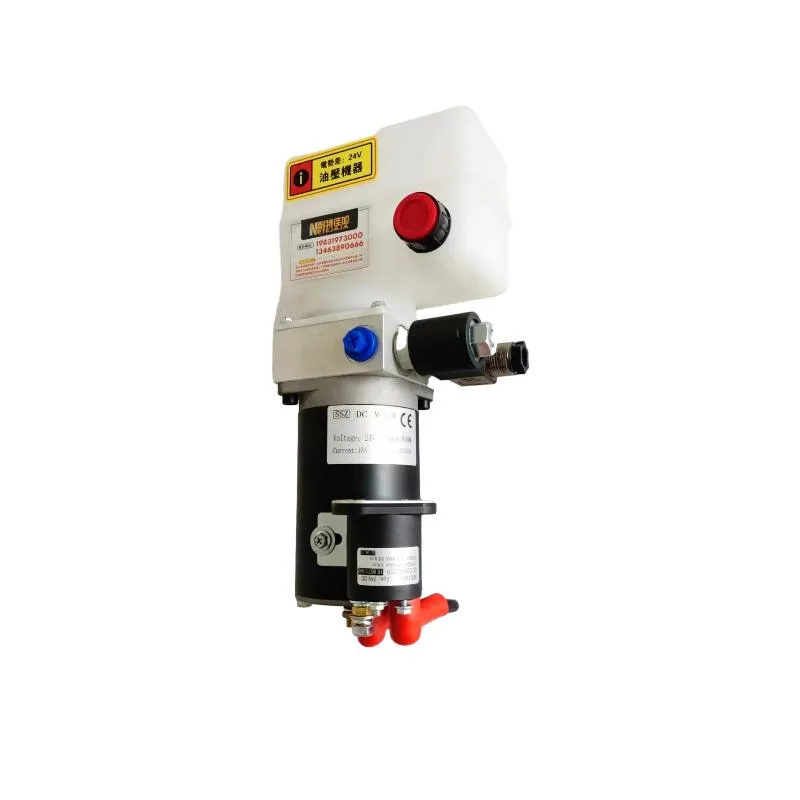Jul . 27, 2024 18:16 Back to list
Exploring Innovative Seal Solutions in the Manufacturing of Hydraulic Cylinders for Enhanced Performance
Changing Seals in Hydraulic Cylinder Manufacturing
Hydraulic cylinders are essential components in various industrial applications, providing the necessary force and motion to machinery. The performance and longevity of these cylinders heavily depend on the effectiveness of their seals. Over time, seals can wear out due to the pressures, temperatures, and fluid dynamics they are subjected to, necessitating changes to maintain optimal functioning. This article explores the importance of changing seals in hydraulic cylinder manufacturing, the challenges involved, and best practices for effective management.
Importance of Seal Integrity
Seals in hydraulic cylinders serve a critical role in preventing fluid leakage and maintaining pressure within the system. They prevent contamination from external substances and ensure that hydraulic fluid remains in its designated area, which is vital for maximizing efficiency and performance. Any compromise in seal integrity can lead to leaks, resulting in loss of hydraulic pressure and reduced machinery performance, which can ultimately affect productivity and safety.
Common Types of Seals
There are several types of seals used in hydraulic cylinders, each serving specific functions. The most common include
1. O-Rings These are circular seals that fit into a groove and are compressed to form a seal. They are inexpensive and easy to install but can be prone to failure under extreme conditions. 2. Rod Seals These are used to seal the rod of the hydraulic cylinder, preventing leakage as the rod moves in and out. They must withstand dynamic loads and abrasion.
3. Piston Seals These seals ensure that hydraulic pressure is maintained within the cylinder when the piston is in motion. They are crucial for the efficient functioning of the hydraulic system.
Challenges in Changing Seals
changing seals in hydraulic cylinder manufacturers

Changing seals in hydraulic cylinders is not without its challenges. One of the primary issues is the risk of contamination during the seal replacement process. Any foreign particles that enter the hydraulic system can lead to further damage, including wear on components and sudden failures.
Additionally, improper installation of seals can lead to premature failure, resulting in costly downtime and repairs. Therefore, it is essential for manufacturers to adhere to standardized procedures and guidelines when changing seals.
Best Practices for Seal Management
1. Scheduled Maintenance Regular inspections and scheduled maintenance can help detect early signs of seal wear and tear. This proactive approach can prevent unexpected failures and enhance system reliability.
2. Quality Components Using high-quality seals and materials can significantly improve the durability and performance of hydraulic cylinders. Manufacturers should prioritize sourcing seals from reputable suppliers who adhere to industry standards.
3. Training and Awareness Ensuring that personnel are trained in proper seal installation and maintenance techniques is crucial. Training should cover how to handle seals, recognize signs of wear, and avoid contamination during seal replacement.
4. Advanced Design Technologies Embracing new technologies and designs can lead to better seal performance. Innovations such as improved materials and design tweaks can provide better resistance to wear and greater reliability.
Conclusion
Changing seals in hydraulic cylinder manufacturing is a critical process that directly impacts the efficiency and longevity of hydraulic systems. By understanding the importance of seal integrity, recognizing the common types of seals, and implementing best practices in seal management, manufacturers can significantly improve the reliability and performance of their hydraulic systems. As technology advances, ongoing innovation in seal design and materials will further enhance the effectiveness of hydraulic cylinders, ensuring they meet the demands of today’s industrial applications.
-
Fork Lift Power Units - Hebei Shenghan | Efficiency, Reliability
NewsJul.13,2025
-
1.5-Ton Turbocharged Cylinder-Hebei Shenghan|Hydraulic Solution,Energy Efficiency
NewsJul.13,2025
-
Auto Hoist Power Units-Hebei Shenghan|Efficiency&Industrial Lifting
NewsJul.13,2025
-
Double Acting Power Units-Hebei Shenghan|Hydraulic Solutions,Industrial Efficiency
NewsJul.13,2025
-
1.5 Ton Lifting Cylinder 70/82-40-290-535 - High-Performance Hydraulic Solution | Hebei Shenghan
NewsJul.13,2025
-
Fork Lift Power Units - Hebei Shenghan | Efficiency&Reliability
NewsJul.13,2025
